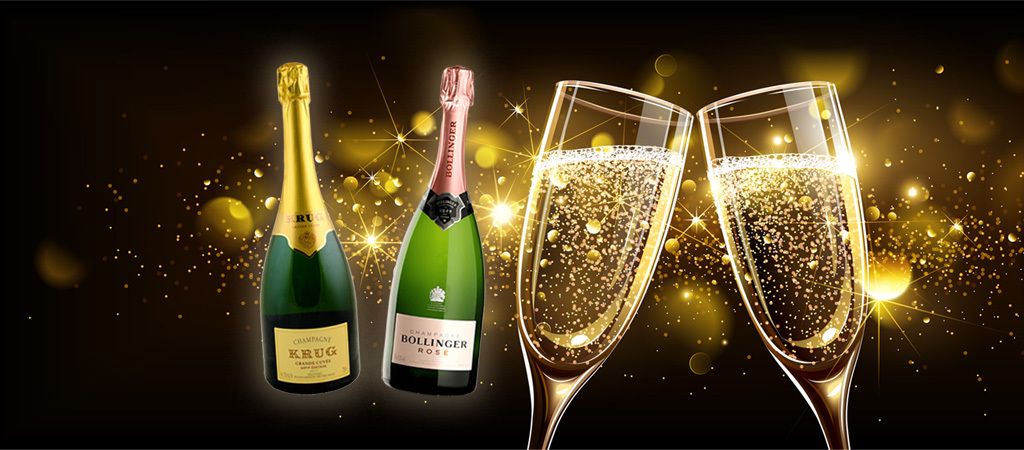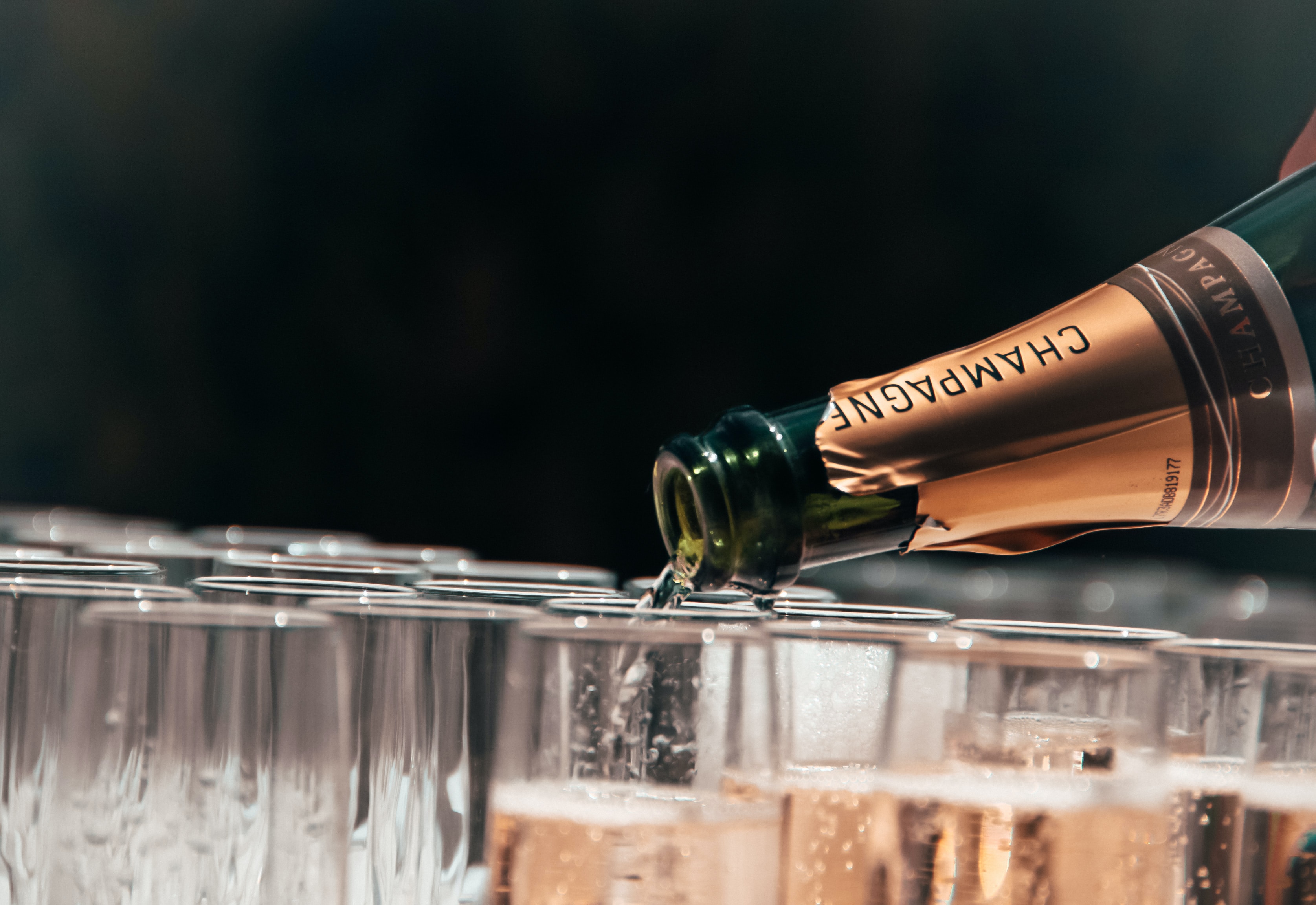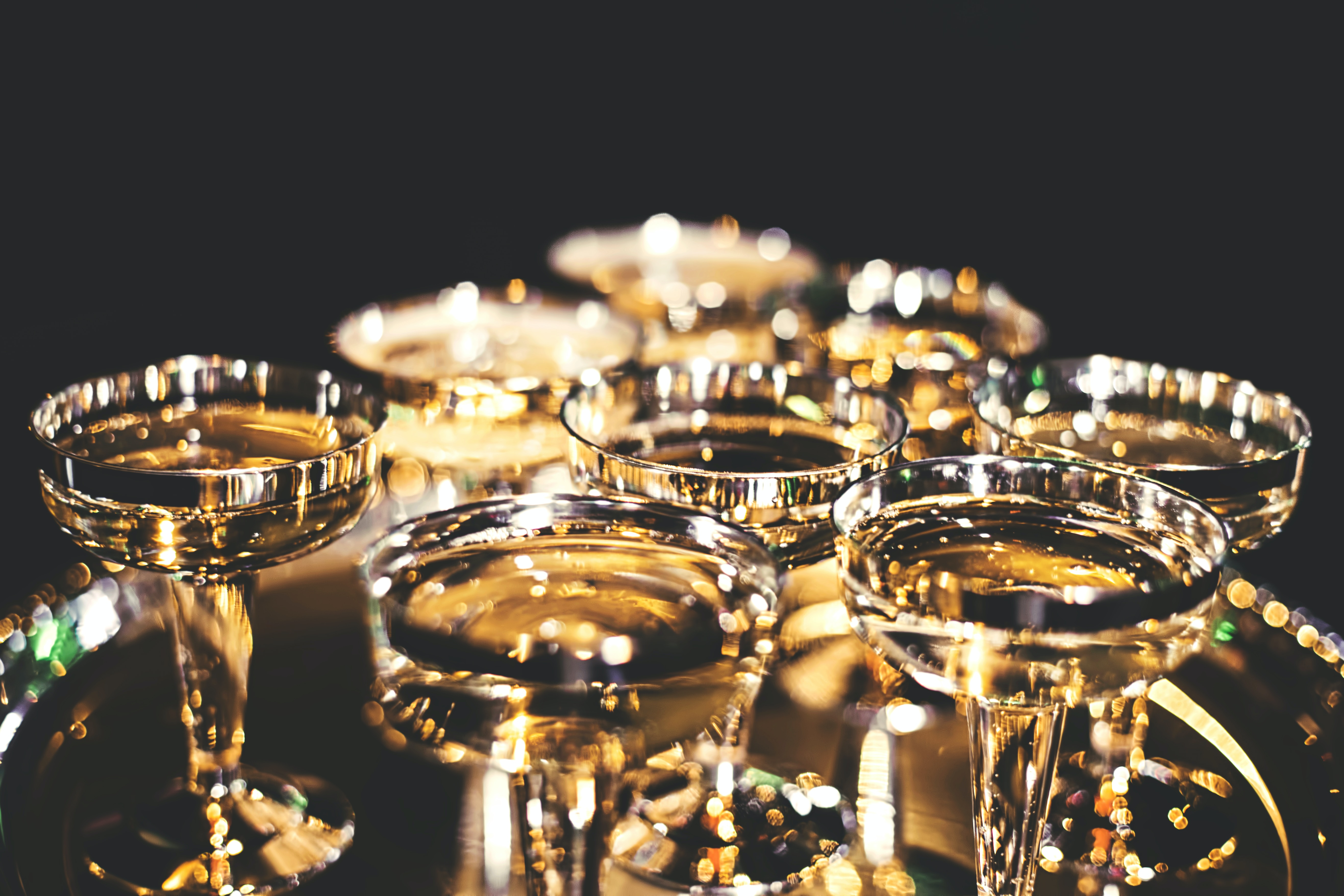
It’s the season for popping corks on champagne bottles. If you’re anything like us, that season started with Thanksgiving and is going strong through New Year’s Day. As with all wine, the temperature is paramount when serving a good bottle of bubbly. Entire industries are devoted to making sure your wine is at the exact right temperature when it hits your lips.
Which begs the question, what is the best temperature to serve champagne?
As someone who drinks a lot of champagne year-round and has worked at bars that highlight champagne service, I can go deep on this subject. I worked at Rum Trader in Berlin, which devotes a huge part of its service to magnum Bollinger bottles — the only place outside of Champagne, France that does so. So knowing and treating champagne correctly is a passion of mine.
First and foremost, you want to let your champagne rest in a cool and dry place in general. A cellar that stays below 60F is ideal (a pantry off the kitchen typically works). Then, you’ll want to put that bottle in the fridge the night before you plan to open it. The temperature settles in if you have a nice 12-hour window for the bottle to rest at that temp without being jostled around. But there’s so much more to it than that. Let’s get in the weeds!

There are some different thoughts about the ideal temperature to serve/drink champagne. First, let’s look at a fridge. The average U.S. home fridge is going to be set for 40F. The bottom and back of the fridge will be cooler by two degrees or so. The door will be the warmest with an additional two or even three degrees. So, you’re looking at a window of 38 to 43 degrees Fahrenheit in any given home fridge — generally.
The consensus out there is that brut champagne — the dry version that most of us drink — should be served at 46F to 50F. If you don’t have a fancy wine fridge, you’ll need to plan a little. The best idea is to take the bottle out about 10 to 15 minutes before you pop it to allow the temperature to rise from 40F to 46F. Once popped, the wine will continue to warm more rapidly. If you have four people/glasses, you should be able to get two rounds from the bottle pretty easily. If you’re pouring that second glass within about 15 minutes, you should be fine without an ice bucket. If you’re with slow drinkers, you’ll want to use an ice bucket with a very scant amount of ice to maintain cool temps.
If you’re talking to an expert from Champagne, France, things change slightly. The Chef de caves and Executive VP of Production at Louis Roederer, Jean-Baptiste Lecaillon, famously insists that champagne should be enjoyed at 50F to 54F, which is significantly warmer than what I’ve listed above. Lecaillon notes that the profile notes available in champagne are at their most vibrant in that temperature range. This temperature is also far easier to achieve if you’re pulling a bottle from a dark and dank cellar. In practice, you simply have to pull your bottle from the fridge much sooner — at least a half-an-hour — before you pop it for pouring. In this case, though, I’d 100% use an ice bucket to ensure that the temperature doesn’t go above 55F. The wine will just taste warm after that.
If you want to follow what The Court of Master Sommeliers says, you’ll want to aim for 42F to 50F. This is the widest and most useful metric to use. There’s a lot of space here to enjoy nicely chilled champagne and a little warmer and creamier champagne that can be simply left on a table as you pour, drink, and repour until the bottle is kicked. This is the tactic that I’d use. I’d pull the bottle from the fridge and let it sit on the counter for a good five minutes. Once popped, I’d simply leave the bottle on the counter/table until finished (which is never that long).

Okay, so how do you measure the temperature of your wine? Well, a lot of it is just instinct. You know that bottle is coming out of the fridge at 38F-40F. Unless your kitchen is a sauna, it won’t warm that quickly — like I said, a 10-minute sit on the counter is plenty of time to get to the mid-40s temp-wise. Then if you’re aiming for a 50F to 54F temperature by the end, sitting on the table is perfectly fine — again, unless your house is sauna.
You can get wine temperature gauges like this if you want to get really pedantic about it. But unless you’re pouring for Master Sommelier judges, I’d keep it a little simpler than that and trust your abilities to feel it out.
In the end, get that bottle in the fridge the night before, take it out of the fridge five to 10 minutes before you want to pop it, and then enjoy the ride.
